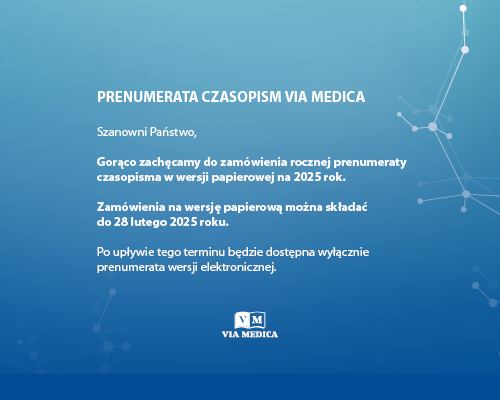Modern therapy of acute coronary syndromes based on prasugrel — available to Polish patients
Streszczenie
Patients with acute coronary syndromes undergoing primary percutaneous coronary intervention should receive dual-antiplatelet therapy, a combination of acetylsalicylic acid and a P2Y12 inhibitor. The preferred P2Y12 inhibitors are prasugrel or ticagrelor. These drugs have a more rapid onset of action, greater potency, and are superior to clopidogrel in terms of clinical outcomes. Prasugrel is contraindicated in patients with previous stroke/transient ischaemic attack, and its use is generally not recommended in patients aged > 75 years or in patients with lower body weight (< 60 kg) as it has not been associated with net clinical benefit in these subsets. If prasugrel is used in these patients after benefits and risks have been weighted, a reduced maintenance dose (5 mg) is recommended.
Ticagrelor may cause transient dyspnoea at the onset of therapy, which rarely leads to permanent discontinuation. Neither prasugrel nor ticagrelor should be used in patients with a previous haemorrhagic stroke, in patients on oral anticoagulants, or in patients with moderate-to-severe liver disease. When neither of these agents is available (or if they are contraindicated), clopidogrel should be given instead. In most cases, Polish patients have been deprived of modern treatment strategies using potent P2Y12 inhibitors for economic reasons, but generic prasugrel is currently available.
Słowa kluczowe: acute coronary syndromeantiplatelet agentsprasugrel





